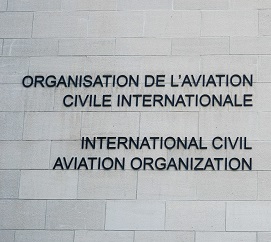Airspace design, technology and industry partnerships are key to efficient ATM operations in Europe
CANSO boosting mobility in Europe
Mircea Bostina, Director General, ROMATSA, explains how the air navigation service provider is working to create vital capacity in Europe.
With around 600 air traffic controllers (ATCOs), ROMATSA guarantees the safety of flights in a controlled airspace of 245,000 sq.km. We provide air navigation services for about one million flights a year, carrying around 200 million passengers, and we pride ourselves with close to zero delays and an excellent track record in safety.
Increased traffic growth of almost 25 percent between 2014-2019 has, however, challenged operations. In terms of service units, in 2018 alone, service units increased by 7.23% compared to 2017. In regards to the European Commission’s initial forecast (via the Second Reference Period (RP2) Performance Plan), the deviation was 18.15% – considerably higher than predicted.
As a CANSO Europe member, Romatsa strongly believes that capacity issues must be addressed in collaboration with our peers, industry partners (airports and airlines) and stakeholders (regulators and States), and through an innovative mix of solutions. To that end, in addition to working with other CANSO Europe ANSP Members to devise strategies for meeting rising demand, we have worked on a number of initiatives in recent years to ease pressure on capacity. These are as follows.
Airspace design
The Joint Enhanced Network Manager and ANSPs Summer 2019Measures are a good example in this regard. Romatsa has an active role within the European collaborative decision-making (CDM) process, being one of the ANSPs most impacted by traffic and complexity growth within the southern and western sectors due to the geopolitical situation and traffic volatility. But it also has spare capacity in the eastern and northern sectors, allowing for a redistribution of some traffic flows, potentially unloading the congested western and central European areas and also the Romanian southern and western sectors.
To that end, Romatsa has been instrumental in preparing to implement the South East Europe Free Route Airspace (SEE FRA) (H24 x-border FRA between Bulgaria, Hungary and Romania) in November 2019. This initiative will deliver much needed capacity in Europe, while making fuel savings and reducing CO2 emissions. The estimated SEE FRA daily benefits are 1350 less minutes of flight, 71 tonnes of fuel savings and reduced CO2 emissions by 226 tonnes and one tonne less NOx.
Technological advances
Our new ATM system, an investment of almost 30 million euros, became operational in April 2019. The operational concept relies on a trajectory-based approach in which the user agrees to fly a trajectory facilitated by the ANSP. This ensures that trajectory changes are kept to a minimum to achieve the best outcome for all users. Flexible and dynamic airspace sectorisation will improve the capacity and the economic use of resources. The most important benefits are increased area control centre (ACC) capacity, increased flexibility, the possibility to open additional sectors and airspace structure optimisation. The new system is aligned with the requirements from the European ATM Master Plan and the functionalities of the Pilot Common Project through which SESAR mature solutions are implemented.
Industry partnerships
We have started a collaboration with IATA on developing and implementing a national airspace strategy. This is a natural and much needed step forward in bringing together all aviation stakeholders in Romania and setting together our priorities in order to meet customer demand, deliver on the Single European Sky (SES) high level goals and increase the competitiveness of the Romanian aviation sector and of the overall economy. By working together with our industry partner, we are confident that we can find new ways of securing capacity both now and in the future.
Summer 2019 will be a challenge for aviation across Europe, but it will also show that cooperative measures can bring tangible results. From 2020, after more of such measures in terms of airspace redesign, technological advances and multi-stakeholder cooperation are implemented, the capacity gap will start to close. Romatsa will continue working with our partners within CANSO Europe to deliver on our commitment for safe, efficient and environmentally conscious services.
To read more about the measures Romatsa has taken to create capacity in Europe, please download the factsheet.




